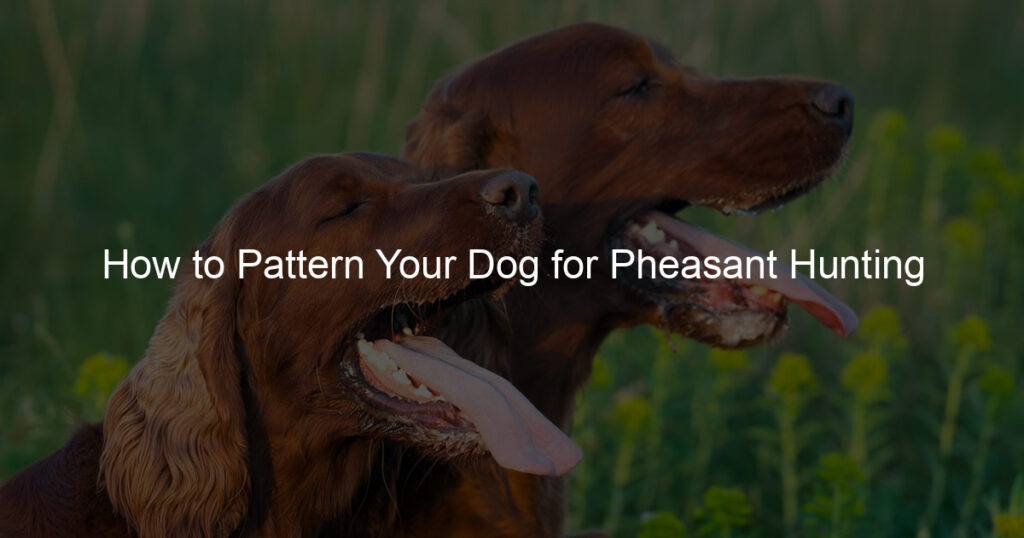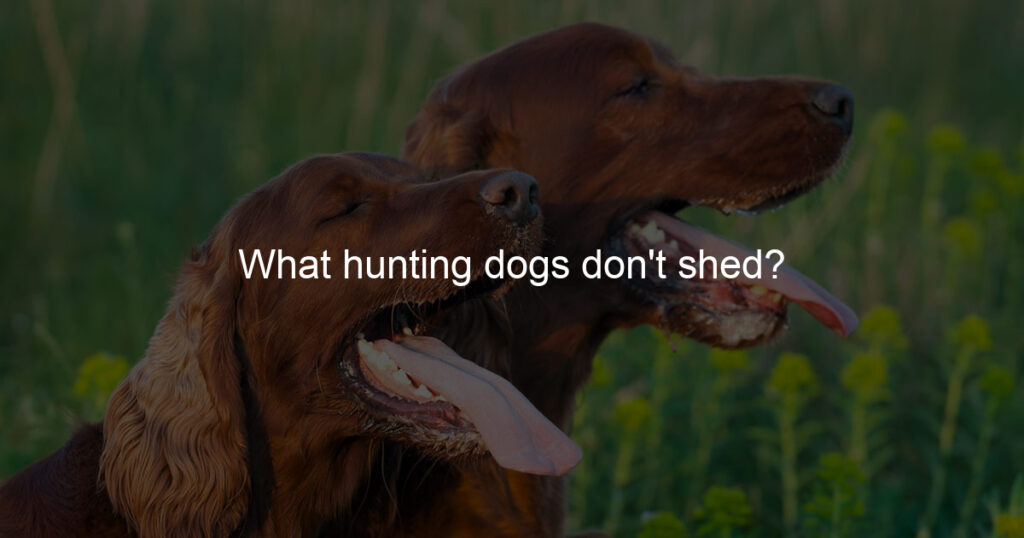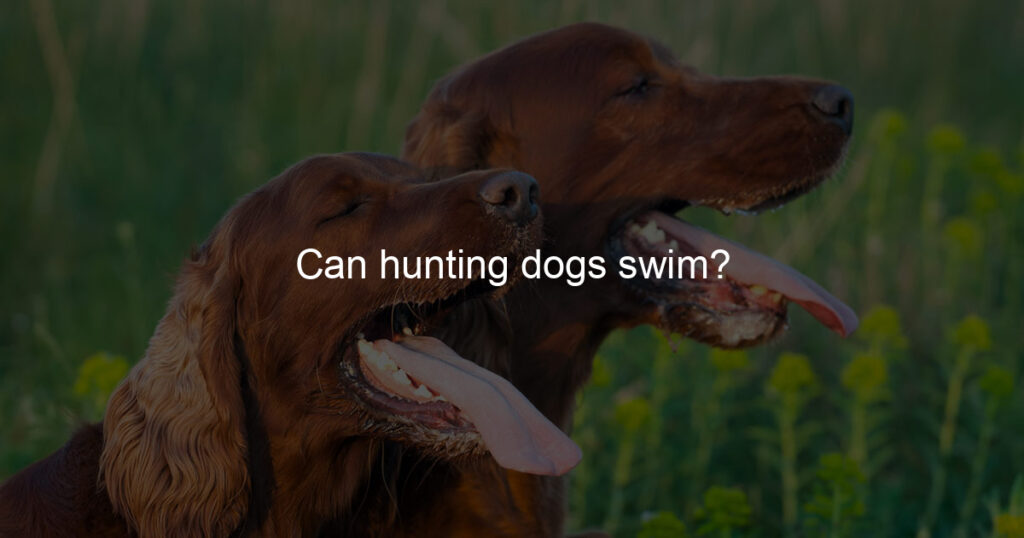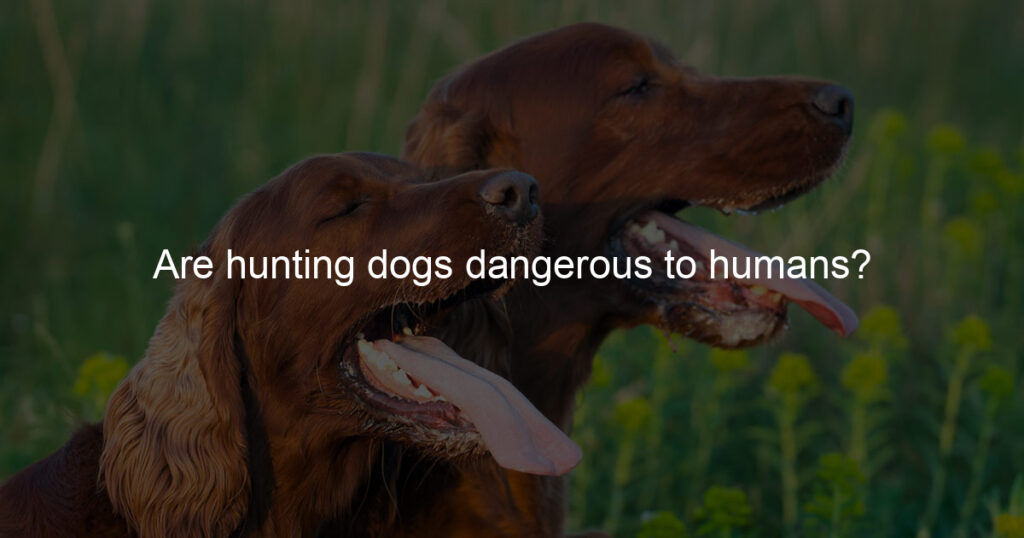Are you an avid hunter who’s looking for a way to take your hunting skills to the next level? Or, do you just love spending time in the great outdoors with your furry best friend? If so, then pheasant hunting with your dog could be the activity for you!
With some simple guidance and practice, both you and your pup can get ready – from learning how to pattern him or her in preparation for finding birds in the wild – read on to find out all there is to know about training your pet partner-in-crime as they search and point objects alongside you.
What’s the best pheasant hunting dog breed?
Pheasant hunting is a fun and rewarding experience, but you won’t get far without the right dog. Different breeds excel in various areas, so choosing the best one depends on your preferences. For instance, pointing breeds are great at finding birds and holding points until you arrive to take the shot, while retrievers are great at picking up downed birds.
Also worth considering is energy levels – some dogs can hunt for hours on end with endurance, while others tire out more quickly. All things considered, no one breed stands out above all others; it comes down to what will work best for your situation and hunting style.
What is the dog hunting method?
Dog hunting is a time-honored tradition that has been around for centuries. It’s an animal-assisted method of hunting game, most notably in Africa, India, and Australia. During dog hunting, trained dogs are used to pursue the animal and corner it while simultaneously alerting the hunter.
The dogs then control the quarry until hunted or until they move away from the area shortly after. In many cases, the skilled hunter may even complete the kill without having to leave their blind. Regardless, it’s an exciting method for both hunters and their four-legged companions as they can work together uniquely and get closer to nature than ever before.
How do I make my dog a hunter?
If you’re looking to make your dog a hunter, it’ll take time and patience. Start with basic obedience training, making sure your pup understands the commands you give them. You can progress to games such as hide-and-seek with treats as rewards, which help teach problem-solving and location memory.
Then, introduce hunting items such as dummies and whistles – gradually use larger perimeter hunts with less guidance for more of a challenge. Finally, if your pup has taken well to the previous steps, try taking them out in the field on actual hunts where they can begin honing their skills under greater pressure. Don’t forget – safety is key throughout the entire process!
How far should I let my pointer range?
When it comes to getting up close and personal with your pointer finger, it can be tricky to decide how far you should go. On the one hand, you want to get in there to be as precise as possible, but on the other hand, you don’t necessarily want to overburden your joints and put more strain than necessary on your hands.
It’s important to strike the right balance; unreasonable proximity may lead to fatigue and misalignment that could make your task more difficult or even cause an injury. Thus, try experimenting with different distances; see what feels comfortable for you without compromising accuracy and efficiency. Remember: A happy hand is a productive one!
What is the easiest dog to train for bird hunting?
Hunting birds with dogs can be an incredibly rewarding experience. Any breed of dog can be trained to hunt birds, but some are better suited for this activity than others. For people who want an easy-to-train dog that still excels at bird hunting, a Pointer or Retriever is hard to beat.
Both of these breeds have instincts for locating and retrieving birds and are eager to please their owners; this makes them highly trainable for the task at hand. With the right instructions and proper training, both breeds can become adept bird-hunting dogs in no time.
What is the rarest hunting dog?
When it comes to hunting dogs, some of the most popular breeds out there are pointers and retrievers. But if you’re looking for something truly unique, why not consider the Sporting Lucas Terrier? This rare breed was developed by George Lucas in Spain during the late 1800s, and it is known for its keen sense of smell and enthusiasm when tracking prey.
It’s an ideal choice for any hunter looking to add a hint of variety to their outings! Despite its rarity, this breed requires minimal grooming, and can easily adapt to life indoors or outdoors depending on your preference. Overall, if you’re seeking a special pup to accompany your next expedition into the wild, make sure to consult with a reputable breeder about the Sporting Lucas Terrier!
What are three hunting methods?
Hunting has been a part of human life since prehistoric times and many methods of hunting have evolved over centuries. Three common hunting methods are stalking, ambushing, and still-hunting. Stalking involves slowly walking toward prey to get within shooting range, sometimes using camouflage and decoys to remain undetected.
Ambushing is setting up in a specific spot and waiting for animals to come through the area. Still-hunting involves quietly following animal trails until you can make your shot.
Whether you prefer stalking or still-hunting, each has its advantages and disadvantages that must be considered depending on location and weather conditions. Regardless of the method used, hunters should always be cautious of their safety when out in the field.
How do you train a dog to track?
Training a dog to track involves teaching them to use its sense of smell to follow a particular scent. This requires patience and consistency, as tracking involves the dog going off-leash and leading its path. Start by introducing the pup to the material that has been used for taping and showing them how it smells.
Then, take them on walks around the area with you holding onto a long lead so they can explore different locations that help familiarize the pup with a variety of scents. Once your dog is familiar with tracking objects, you can introduce a track glove or drag a line, which serves as an artificial scent for training the pup’s skills further.
With practice and patience, your pup will soon be able to follow any trail!
What are the dog and bird methods?
The dog and bird method is a unique training technique used by behaviorists to help animals modify their habits and develop better behaviors. It involves using two different types of animals – a bird, typically a pigeon, and a dog – to help dissipate anxieties or phobias that the subject animal may have.
Through this process, the subject animal becomes more accepting of new situations; eventually, it’s able to interact normally with different types of creatures. While the exact mechanics of this method are not fully understood, it seems to be showing promising results and continues to be studied in hopes of deeper insights into how best to help reluctant animals learn new behaviors.
At what age do pointers slow down?
Pointers are full of energy, making them a beloved breed of dog. They love activities like running, swimming, and even agility courses! Unfortunately, like all good things, their energetic life can’t last forever.
Around the age of 8 or 9, pointers tend to start slowing down and becoming more moderate in terms of movement. This doesn’t necessarily mean they’ve completely lost the spark – instead many pointer owners find their dogs just become more relaxed as they move into senior status. It’s an inevitable part of life so why not enjoy each moment you have with your pooch?
Summary
It is important to remember when patterning your dog for pheasant hunting that consistency and patience are key. Remember not to over-train or push the dog too hard, your process of building their skills should be done gradually. More than anything, make sure to have fun and enjoy the journey!
Hunting with dogs can be incredibly rewarding, so take the time to build your relationship with Fido – don’t forget about giving them plenty of love! While there is no one right way to pattern a dog for pheasant hunting, by following these tips you will certainly have a better chance at success. Good luck out there and happy hunting!








